Page 2 of 3
Re: French Alps - July 2012
Posted: Fri Jul 20, 2012 4:09 am
by Rogerdodge
Although, as Paul says, this was not a fruitful day, we still saw 45 species, although the photographic opportunities were not brilliant.
The first path we walked up was a fairly gentle climb, but with a steep cliff on our left, and a sheer drop on our right.
Paul had me quite worried as I saw him, from 100m away, slip down the cliff, stumble backwards across the path, and disappear over the edge. I ran up to see how he was, and as he hauled his battered and scraped body back onto the path, he proudly said
"It's ok, the camera isn't damaged!"
The responsible copper is shown here. Not a brilliantly sharp shot, but I was clinging onto the cliff with one hand, and holding my heavy DSLR in the other!
Re: French Alps - July 2012
Posted: Fri Jul 20, 2012 8:29 am
by Reverdin
Re: French Alps - July 2012
Posted: Fri Jul 20, 2012 9:03 am
by Rogerdodge
Paul
Is this the first French female you have fallen for?

Re: French Alps - July 2012
Posted: Fri Jul 20, 2012 9:32 am
by NickB
Good man, Paul! Well played....saved the camera!
Bones DO mend....but £2K worth of kit.....

(Tho' I can see Roger's thought bubble, as you went over the edge....
" Oh, shit! Paul....Noooo!!!!"
"How long will it take to explain all this?....
...I've only got 4 days left

!!!!")

Which is as it should be; I'd expect no more from the champions of
Xtreme Butterflying , putting body and soul on-the-line.....
I can see Paul, torn and broken at the bottom of that cliff; a faint voice comes up....
"Camera's OK. Just carry-on.....It's only a broken leg; I'll just fix it and catch you up...."
(Eat your heart out. Robson Jerome

)
Re: French Alps - July 2012
Posted: Fri Jul 20, 2012 11:15 am
by Rogerdodge
Tho' I can see Roger's thought bubble, as you went over the edge....
I was actually thinking-
"Hope I can find the camera - his 7D with 100 IS is so much better than my old 30D with 180 and he won't need it where he is going!!."
(only joking Paul - love you really)
Re: French Alps - July 2012
Posted: Sat Jul 21, 2012 6:55 pm
by Reverdin
Day 5 -10th July 2012
Now for further afield again. I had good fortune in the past near a place called Roussas in the Drome, not far from Montelimar. It was either here, or North towards Bourg St Maurice...... we chose the former after my usual indecisiveness. Well placed, it did not seem too long a motorway drive. We arrived as things were stirring.
There did not however seem to be as much there as I remember in the past. There were very few blues, just Silver Studs and Common types. The Berger's provided opportunities as they were more intent on settling than patrolling or nectaring. A couple of very worn False Ilex Hairstreaks were there, and unlike my previous visit, a few pyrgus skippers, not sure but ?Oberthur's??


Male Berger's Clouded Yellow
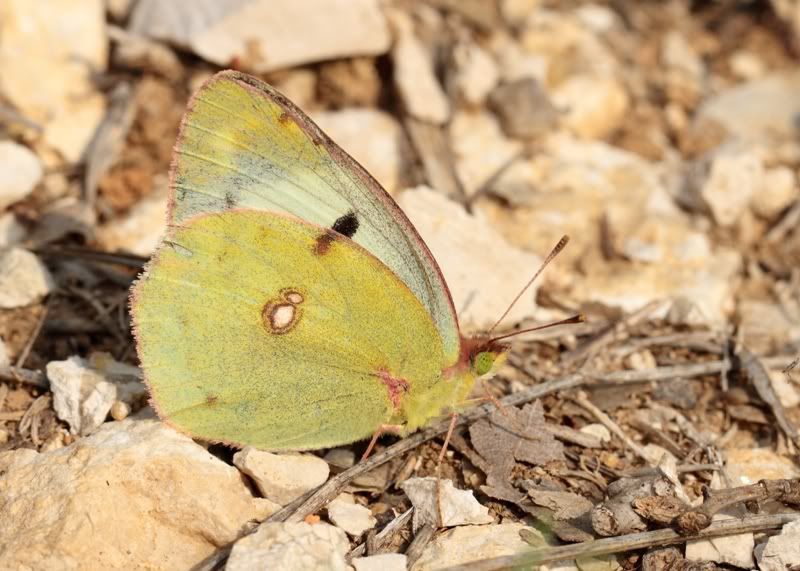
Female ? Berger's
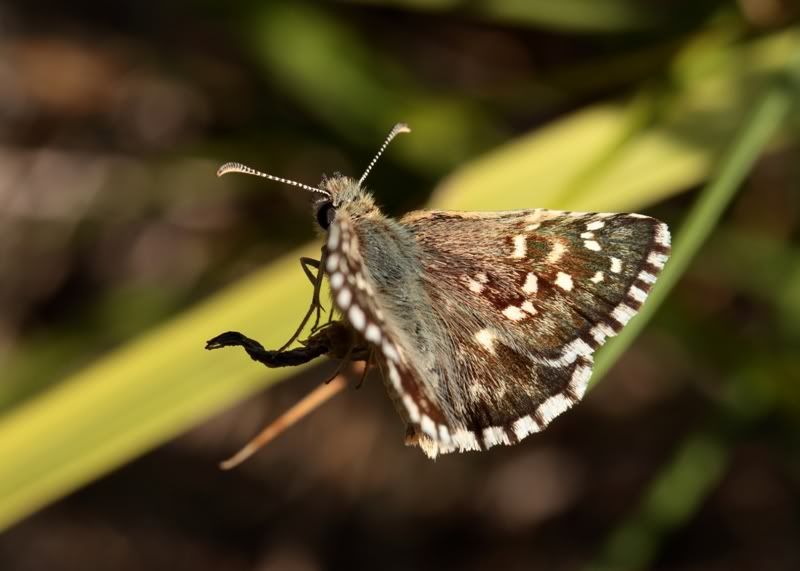
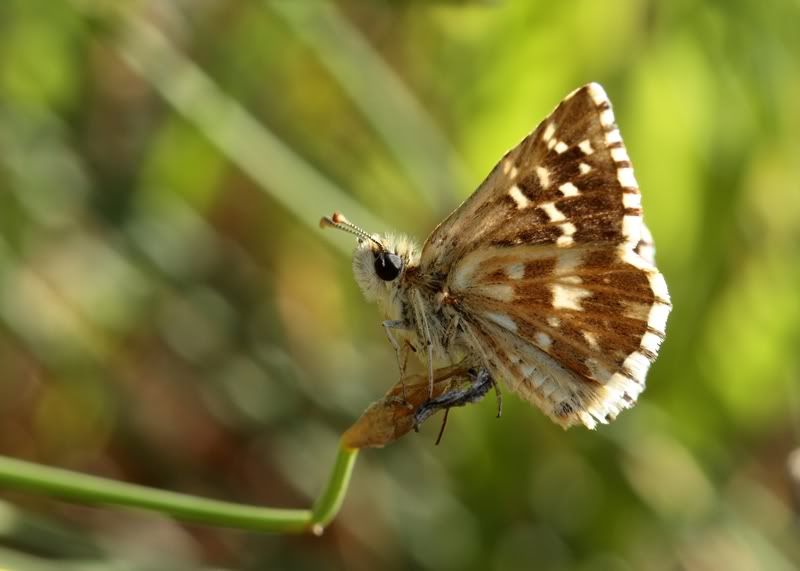
? Oberthur's or malvoides ( edit, malvoides confirmed)
A forest track provided more species, descending into a wet rutted area, Pearly Heaths, Silver Washed Frits and some very placid Purple Hairstreaks allowed us to indulge ourselves further with photos.
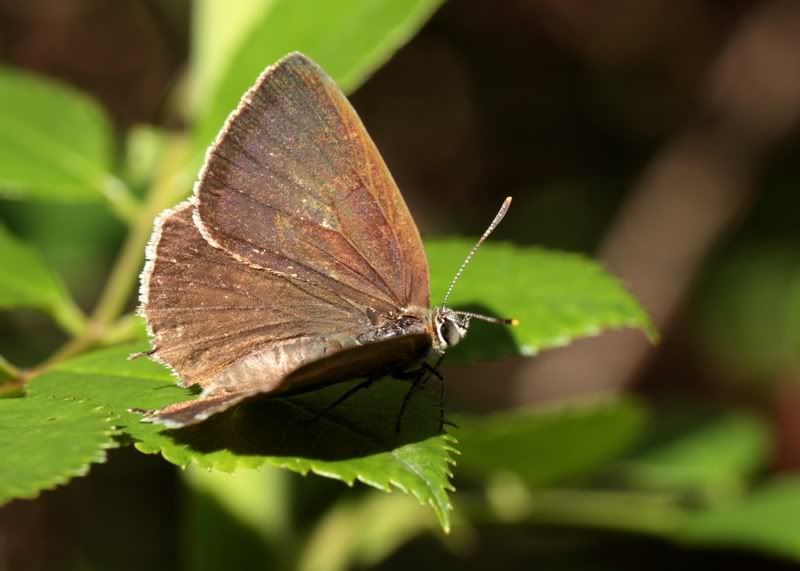
Male Purple Hairstreak
So to lunch. Roussas has a superb Restaurant/ Bar and the Plat du Jour was very much enjoyed, especially after a chance encounter in the Bar's carpark. A superb, fresh Southern White Admiral was nectaring restlessly, and there for at leats 30 minutes. Scarce Swallowtails were around but did not settle.

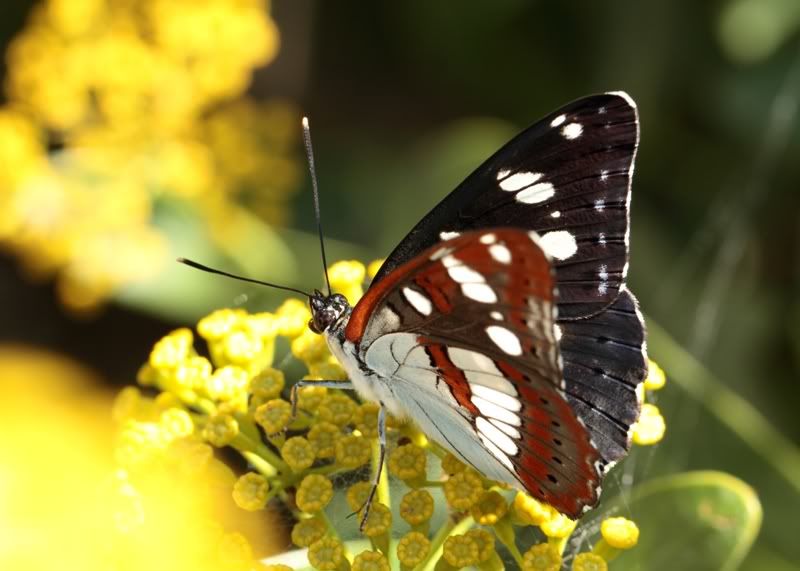
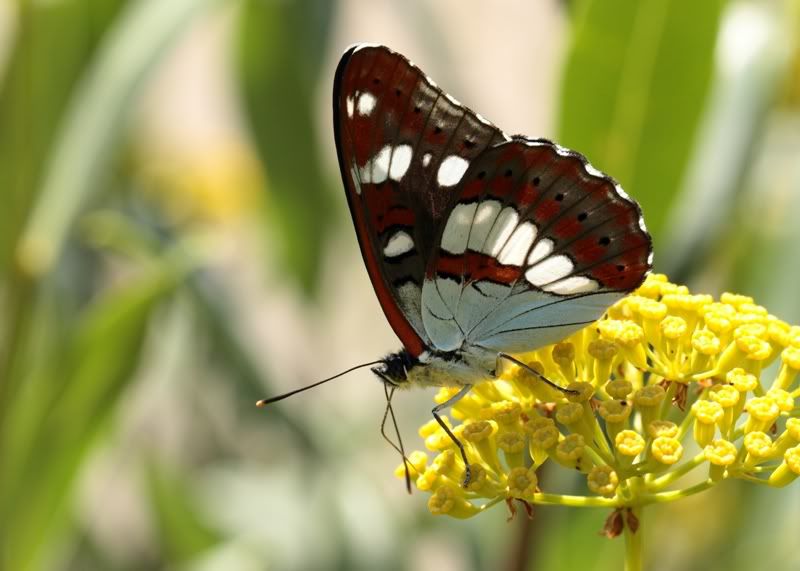
Southern White Admiral
The Woodland Graylings had toyed with us during the morning, not allowing any approach, during the afternoon we fared better. I spent a fruitless half hour stalking one, but Roger did eventually find a co-operative one, and photos - achieved.
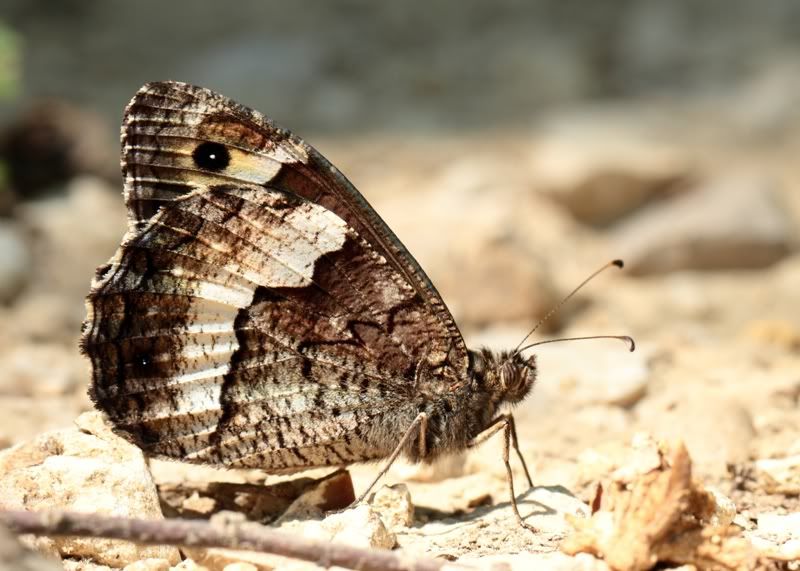
Woodland Grayling ( actually fagi or alcyone - edit.... fagi confirmed)
So, all in all, not species rich, but some rare encounters and good photos taken on another great day.

Re: French Alps - July 2012
Posted: Sun Jul 22, 2012 4:16 pm
by Reverdin
Day 6 -11th July 2012
Our final full day. where to go?.... I was aching to have another go for Silvery Argus, and Roger seemed in agreement as our best day had been in the Queyras. 3 hours drive, but in good spirits we hit the road, albeit a little later than we planned. The weather was improving from a dull start, though windier than our previous visit. This time we could spend more time searching. Roger started with a nap in the car... I was off and out...
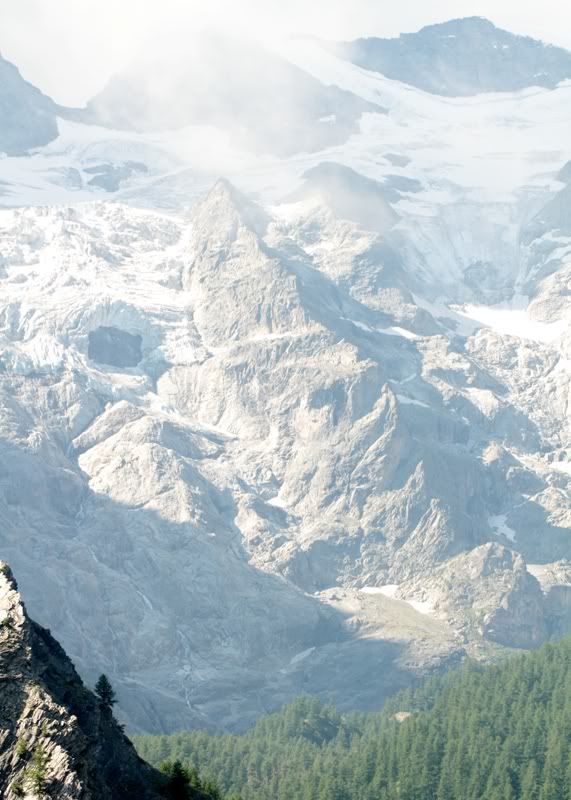
I made straight for the nicias area and quickly found them. I would observe their behaviour (jizz) to be subtly different from other lycaenids, in that they flew fast, haphazardly in something of a darting manner, and were very tricky to follow, on the wing for sometimes 2-3 minutes without resting... difficult to follow. I was fortunate to find a couple of females, interestingly on a nearby but different part of the sloping meadow, ? significant. The males were generally flying over a small area of meadow just below the conifer line at this site, where Geraniums were abundant.
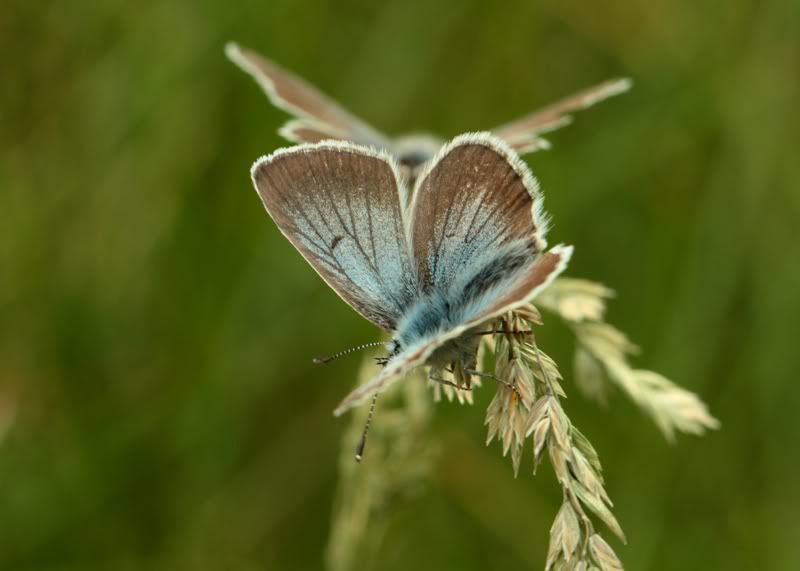
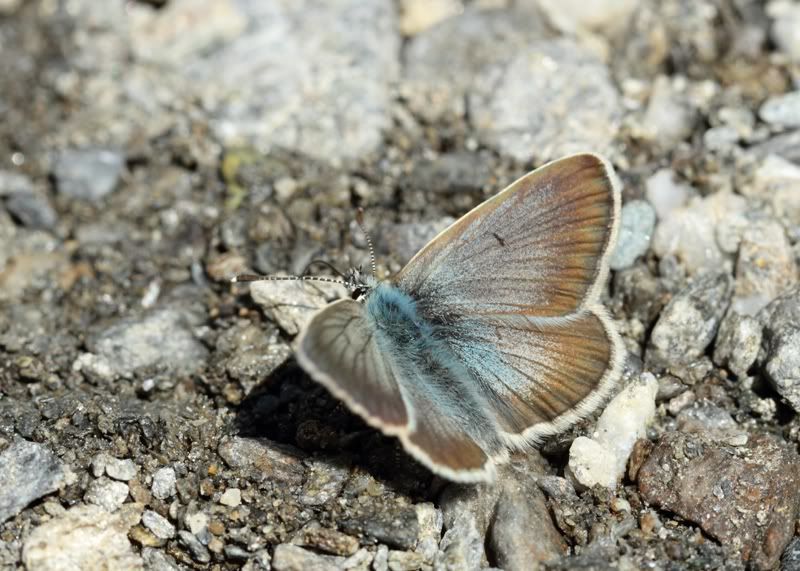
Male Silvery Argus
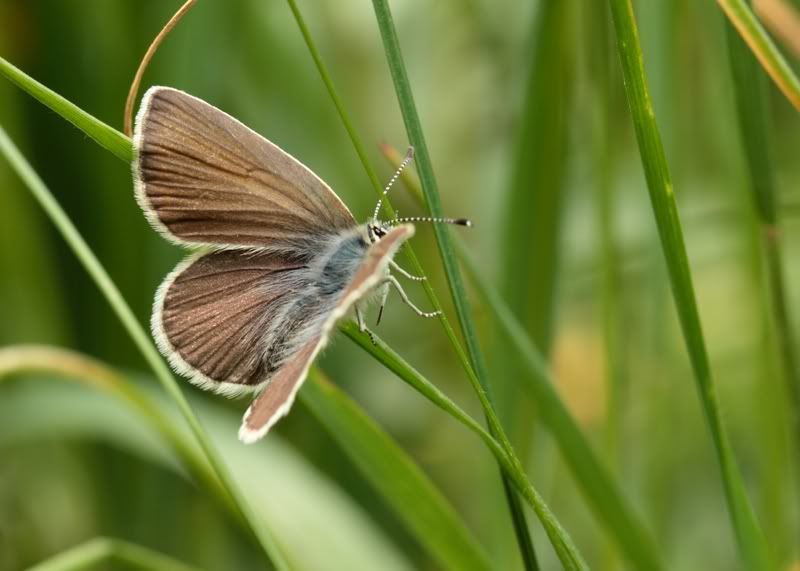
Female Silvery Argus
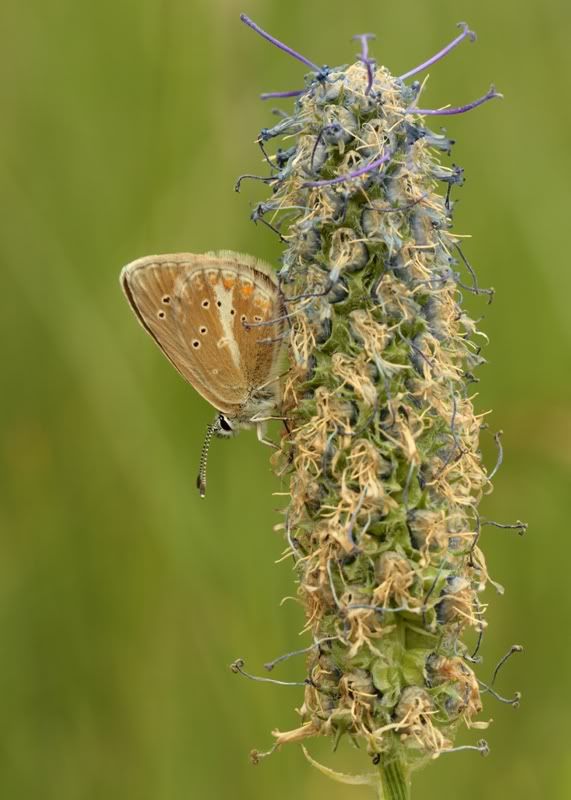
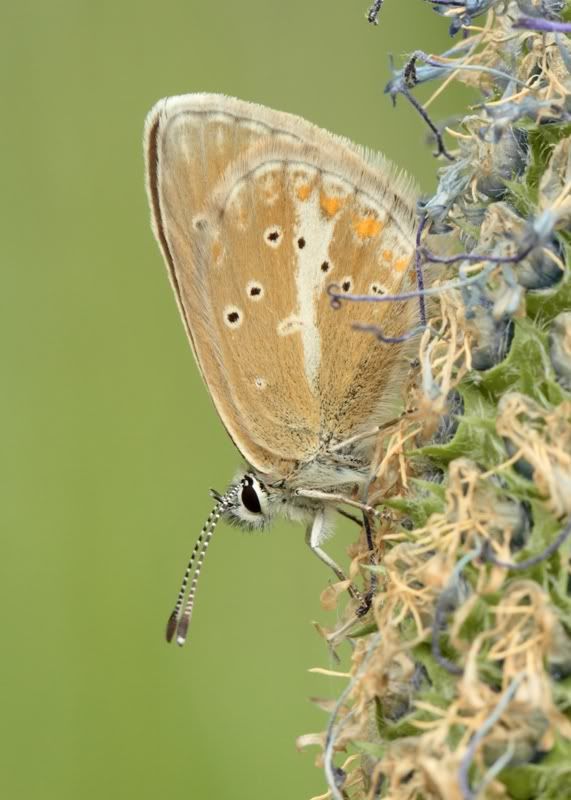
underside of (edit) female Silvery Argus
A Damon Blue, fresh as a daisy, was a new species from our last visit a few days earlier, and A Glandon Blue posed well.
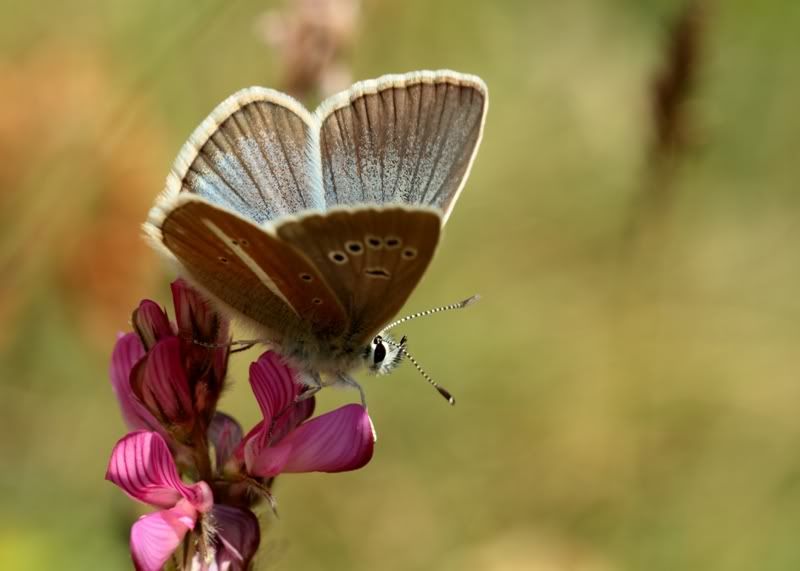
Damon Blue
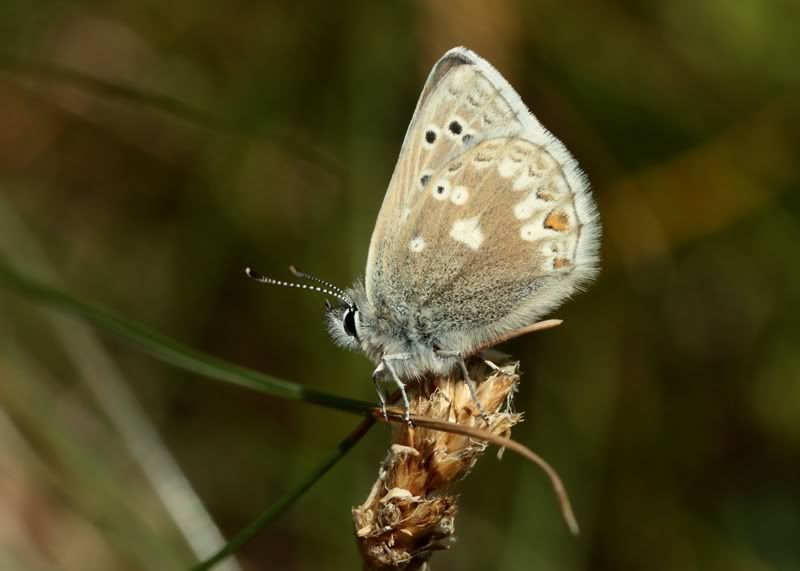
Glandon Blue
Fritillaries were everywhere, all 3 Argynnis which could have been found, were there.
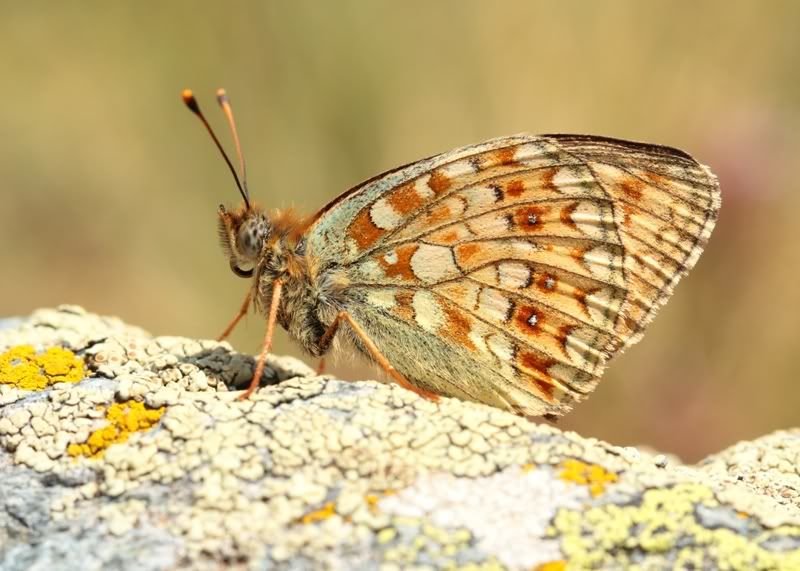
Niobe Fritillary
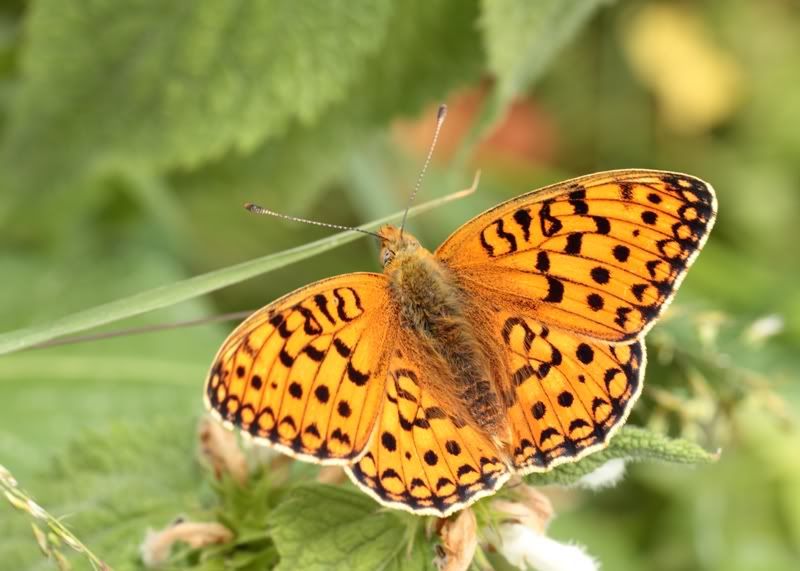
High Brown ( I think) - (edit - nope, its Niobe - many thanks )
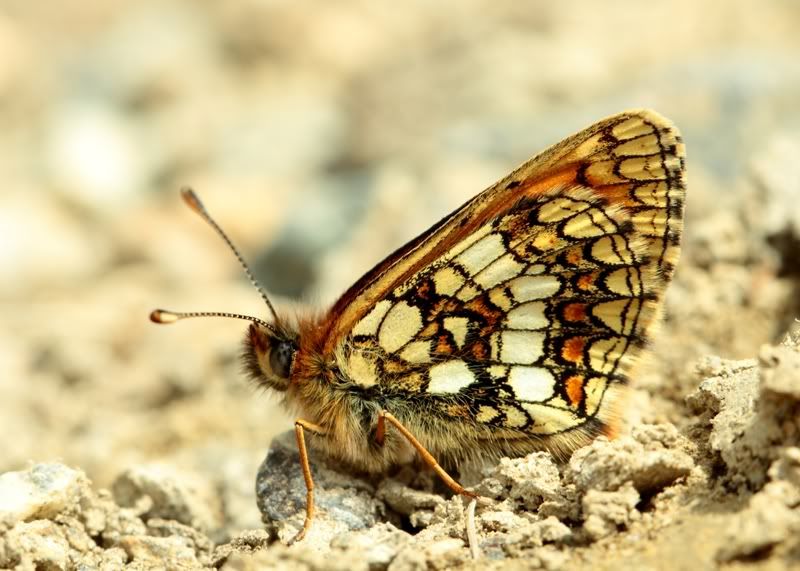
A diminutive Grisons Frit was also mineralling.
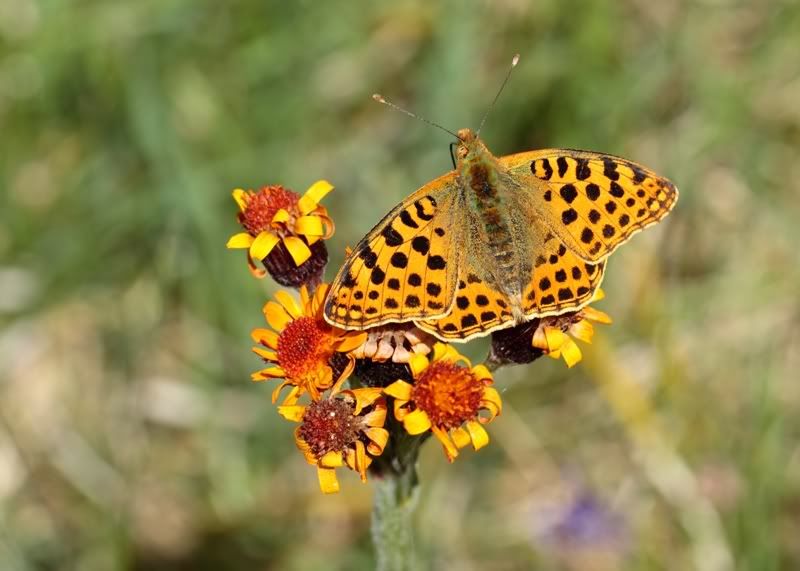
A QoS also showed off.
We lastly set off up to higher altitudes, as on our last visit, where Roger Gibbons had lead us to Cynthia's Frit.... we had further good sightings, a fitting finale to our week. Roger H has kept a list of species seen during the week, and I hope he will follow this with details.
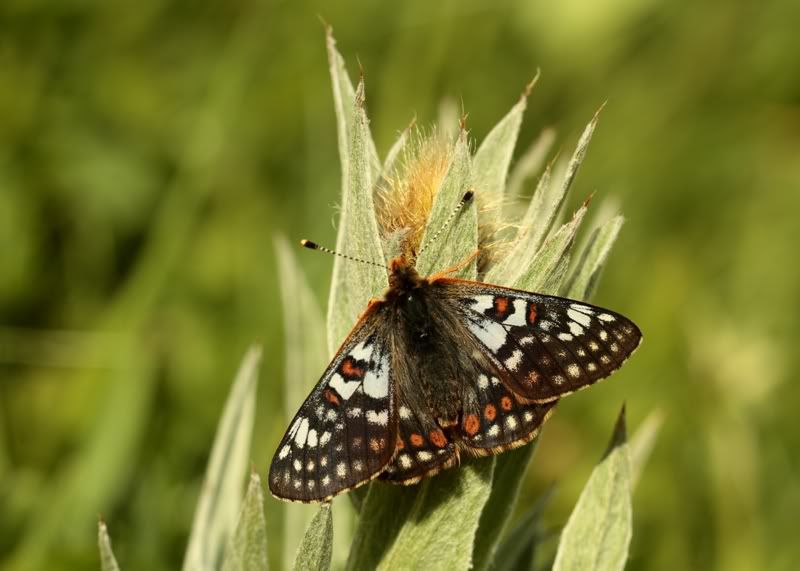
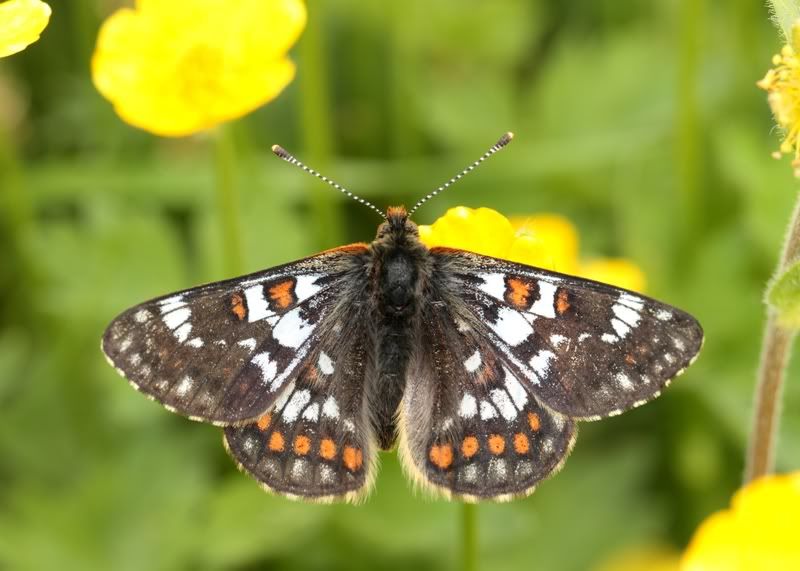
Male Cynthia's Fritillaries
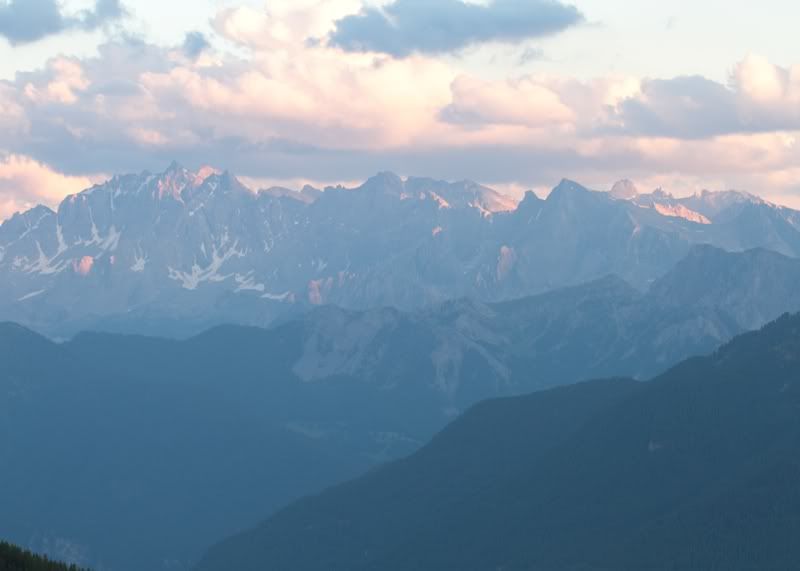
and so the sun set on our tour



Re: French Alps - July 2012
Posted: Sun Jul 22, 2012 7:12 pm
by Rogerdodge
A great end to a great trip.
I couldn't have asked for better butterflies (I had hoped for 80-85, and got 95), better company, or better weather.
We had excellent (if a little windy), weather for the whole week - all bar a 1 hour hailstorm on the motorway with hail stones the size of golf balls that bought it to a total standstill. Amazing.
The scenery was awe inspiring, and the food was pretty good too!

- Cynthia
Cynthias were really tricky to photograph well. They always seemed to bask with the wings, at an angle greater than 180. Thus I have no shots which are wintip to wingtip sharp. Damn - oh - hang on - that measn I HAVE to go back again.......
Re: French Alps - July 2012
Posted: Sun Jul 22, 2012 7:44 pm
by Padfield
More wonderful pictures.
The skipper is surely malvoides and I'm pretty confident the grayling is woodland.The undersides of nicias are quite anomalous for a male - it looks far more like a female - but if you saw the uppersides that trumps underside tone.
Finally, yes - that is definitely diamina, not athalia.
Guy
Re: French Alps - July 2012
Posted: Sun Jul 22, 2012 7:54 pm
by Reverdin
err... couldn't be sure was a male underside... so I will go with female gladly

, and malvoides.... am I allowed to claim a new species, or is it still really plain old malvae with a French accent

? Thanks for the clarification Guy, and also the commentary about warrenensis.... I would love to have been able to say it was, but know I can't

do you go with Berger's for both male & female Colias, and also Piedmont for the erebia underside?. Again thanks for the input

Re: French Alps - July 2012
Posted: Sun Jul 22, 2012 8:37 pm
by Pete Eeles
Great report!
Regarding the High Brown Frit upperside - my initial reaction was "niobe". If any of the experts could let us know, and why, I'd appreciate it

Cheers,
- Pete
Re: French Alps - July 2012
Posted: Sun Jul 22, 2012 8:38 pm
by Pete Eeles
padfield wrote:I'm pretty confident the grayling is woodland
Still awaiting a response from our Hungarian contingent, Guy! But would be very interested in your thinking to date on separating Woodland and Rock Grayling! I'm wondering if a trip to the Natural History Museum collections would help here.
Cheers,
- Pete
Re: French Alps - July 2012
Posted: Sun Jul 22, 2012 8:50 pm
by Roger Gibbons
Agree niobe - curvature of forewing and thickness of sex brands. Also agree fagi.
Re: French Alps - July 2012
Posted: Sun Jul 22, 2012 9:09 pm
by Pete Eeles
Roger Gibbons wrote:Also agree fagi.
Thanks Roger - but why? I'm seriously interested in understanding the diagnostics in distinguishing
fagi and
alcyone. And we'd be doing the critters a service if we can prevent ID by any means other than morphology!
Cheers,
- Pete
Re: French Alps - July 2012
Posted: Sun Jul 22, 2012 9:35 pm
by Padfield
Piedmont, yes, and the two Berger's.
I've studied pictures of (set specimens of) woodland and rock grayling across their range and it is clear that most characters are very variable - what appears to count as a distinguishing feature in one region might not do so in another. HOWEVER, in central/southern Europe (not necessarily Eastern Europe/Asia) there are a few fairly regular differences visible on the underside. One is the surroundings of the apical spot on the forewing. In
hermione there is usually a more or less
well defined eyebrow, shaped to the eye, or at least, the dark above the eye is curved, leaving a space, not flush with the vein. The white band on the hindwing is relatively
slightly narrower, often
obscured with irroration, and
follows better the form of the inner dark band, usually leaving room for
three or more rather well defined white spots to appear outside the white band. The whole butterfly has a smoother, darker feel.
Here is a Swiss example of
hermione (formerly,
genava, formerly
alcyone):

And here is a Spanish example:

In
fagi the dark above the eye more usually
follows the line of the vein or is very obscurely defined, maybe leaving a gap but
not shaped to the eye. The white band on the hindwing is often
broader, often more
chalky-white, usually more ill-defined at the outside and less often leaves room for clear white spots beyond it (though in the second picture below the spots are clearly visible).
This is a
fagi from Spain:

This one, from the south of France, has more irroration in the white band but the eye spot shows the same lack of an eyebrow above:

These features are statistically useful for central/southern Europe and together give a 'feel' to the butterfly. But they are not the Holy Grail of an edf (exclusive distinguishing feature)! Any or all of them could mislead in a particular individual.
Guy
Re: French Alps - July 2012
Posted: Sun Jul 22, 2012 9:41 pm
by Pete Eeles
Thanks so much Guy! Will definitely put some effort into looking into this and will report back

Good work sir!
Cheers,
- Pete
Re: French Alps - July 2012
Posted: Sun Jul 22, 2012 9:44 pm
by David M
Amazing stuff, Guy. How do you accumulate this knowledge in the first place? Your eye for detail is extraordinary.
Re: French Alps - July 2012
Posted: Mon Jul 23, 2012 7:18 am
by Roger Gibbons
I'm not sure if we all came to the "check its eyebrows" conclusion independently or by discussion. I don't think you see this ID clue in books.
The machinations of a tortured mind:
http://www.butterfliesoffrance.com/html ... lcyone.htm
As I say on my
alcyone page: Life would be much easier if Rock Graylings always sat on rocks and Woodland Graylings stuck to trees.
Re: French Alps - July 2012
Posted: Mon Jul 23, 2012 12:50 pm
by CFB
Thanks Guy for the eyebrow tip. This seems to confirm that the individuals that I've photographed are as I thought
fagi, for instance:
Incidentally, in his "Butterflies of Europe" (2004), Tristan Lafranchis describes
alcyone and
genava as two different species. Do I gather that these two are now both considered as
hermione?
--
Colin
Re: French Alps - July 2012
Posted: Tue Jul 24, 2012 5:56 pm
by Padfield
Roger Gibbons wrote:I'm not sure if we all came to the "check its eyebrows" conclusion independently or by discussion.
It must be independently as I've never discussed it with anyone. That strengthens its statistical validity, assuming we've both studied different sets of specimens. It's not valid in the eastern range of the species, though.
CFB wrote:Incidentally, in his "Butterflies of Europe" (2004), Tristan Lafranchis describes alcyone and genava as two different species. Do I gather that these two are now both considered as hermione?
I think there is still uncertainty over the status of
genava. It is a well defined taxon, having a distinct Jullien's organ structure, but some authors conflate it with
hermione and others don't. I'm in no position to judge - but nor do I think it important as the populations appear to be discrete. There is a certain conservation advantage in splitting species, because then populations become more special and represent 'rarer' butterflies (and hence can more easily attract protection) - beyond that it's largely a matter of convention what we call them.
Hermione is the type species for the genus
Hipparchia and the name was given by Linnaeus in 1764. The name
alcyone dates from not long after (1775). I don't know the detailed history or why most modern taxomonies now revert to the earlier name for rock grayling (H & R suggest that
hermione is a synonym for
fagi, so it all seems a bit confusing without knowing the details) - but they do.
Guy



























